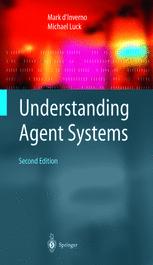

Most ebook files are in PDF format, so you can easily read them using various software such as Foxit Reader or directly on the Google Chrome browser.
Some ebook files are released by publishers in other formats such as .awz, .mobi, .epub, .fb2, etc. You may need to install specific software to read these formats on mobile/PC, such as Calibre.
Please read the tutorial at this link: https://ebookbell.com/faq
We offer FREE conversion to the popular formats you request; however, this may take some time. Therefore, right after payment, please email us, and we will try to provide the service as quickly as possible.
For some exceptional file formats or broken links (if any), please refrain from opening any disputes. Instead, email us first, and we will try to assist within a maximum of 6 hours.
EbookBell Team

4.4
62 reviewsSince the first edition was published two years ago, much has been done on extend ing the work done on SMART to address new and important areas [3-5,54,79,80, 108-110,116,118-120,122]. In this second edition, we have revised, updated and corrected the existing text and added three new chapters. These chapters provide a broader coverage of the fie1d of agents, and show in more detail how the specific framework described can be used to examine other areas. In Chapter 6, we use the concepts of discovery to apply the framework to autonomous interaction in multi agent systems; in Chapter 10 we use it for considering normative agents and sys tems; and in Chapter 11 we describe work on an implementation and development environment. As a course text, the book can be considered in different parts, as follows. - Chapter I and Chapter 2 offer a basic introduction to agents and their core com ponents. - Chapter 3 and Chapter 4 cover relationships between agents and basic notions of cooperation for multi-agent systems. - Chapter 5 and Chapter 6 introduce sociological agents, which are needed for rea soning and planning, and their use in reasoning about communication and inter action. - Chapter 7, Chapter 8, Chapter 9 and Chapter 10 each cover different application areas relating to different aspects, inc1uding coordination (through the contract net), agent architecture (through AgentSpeak(L), social dependence networks, and normative systems.